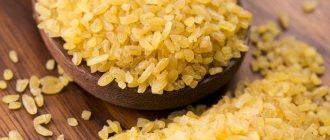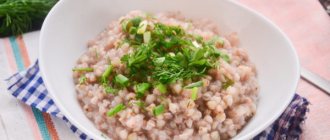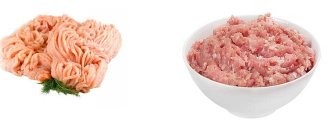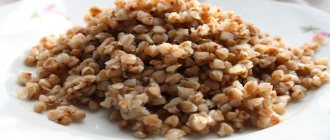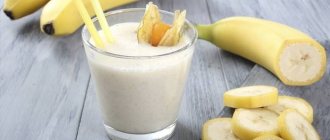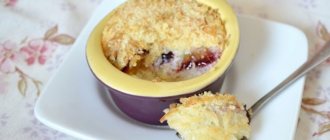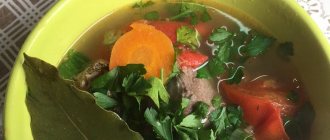Cellulose
Why else does a person need millet porridge? How is it useful? This dish contains a large amount of indigestible fiber. Thanks to this, the product can restore proper intestinal function.
Millet porridge is often recommended for those people who suffer from constipation, bloating or increased gas formation. The fiber contained in millet porridge perfectly combats these problems. After just a few days of regularly eating millet, you will notice a positive result.
Cleaning function
Many doctors recommend eating foods containing millet after undergoing therapy using potent drugs. So, if a person consumes a large amount of antibiotics or other toxic substances, this dish will be life-saving for him. What is useful in millet porridge?
Millet helps cleanse not only the intestines, but also the circulatory system. The liver is the so-called filter of the body. With daily consumption of millet porridge, the organ quickly recovers and returns to its original state.
Calorie content of the product
Depending on how the porridge is prepared, its calorie content may vary.
So, if you cook cereal in water, the dish will have an energy value of about 350 calories per 100 grams of product. If you add sugar or fruit during cooking, this number will become significantly higher. Butter added to porridge also increases its calorie content.
When cooking millet with milk, you should take into account the fat content of the product and its quantity. Also, porridge can be cooked in vegetable or meat broth. Moreover, in the first case there will be fewer calories than in the second.
Calorie content
The number of calories in barley porridge is 76 kcal per 100 grams, provided that it is cooked in water. Nutritional value of the product (ratio of proteins, fats and carbohydrates): 2.3/0.3/15.7.
When adding a piece of butter, the nutritional value will rise to 114.5 kcal, and the BJU ratio will look like 3.4/1.3/21.8 g.
If the cereal is cooked with milk and butter, 100 grams will have 108.8 kcal, and the BZHU will be as follows: 2.7/4.2/14.9 g. Without adding butter, a dish with milk will have a calorie content of 111 kcal and contain 3.6 g protein, 2.0 g fat, 19.8 g carbohydrates.
The calorie content of barley cereal per 100 grams is 324 kcal, nutritional value (BJU) - 10.4/1.3/66.3 g.
Millet porridge
The problem of excess weight has become relevant for many modern people. Porridges make up the menu of many popular and effective diets. All the healthiest cereals are always available. You can quickly prepare porridge from them using various recipes. You can cook the dish with milk or water; the finished dish can be sweet or salty
.
Millet is the most accessible and cheapest cereal. This agricultural product is obtained from the grain crop - millet. Millet porridge is prepared quickly and easily; it is most often prepared for breakfast. It is enjoyed by adults and children because it has a pleasant taste.
Millet goes well with many foods, so it is usually prepared with the addition of:
- dried fruits;
- vegetables;
- fresh fruit:
- mushrooms;
- meat.
You can make more than just porridge from millet
, other dishes are also obtained from it:
- soups;
- bits;
- pies;
- casseroles.
Using various recipes, healthy cereals practically do not get boring and replenish the body with the most useful substances.
What is the calorie content of barley porridge?
Barley porridge is one of the top 10 dietary porridges in terms of its calorie content and takes an honorable 6th place there.
The calorie content of barley porridge in water is 80 kcal, in milk it is an order of magnitude higher - it is 110 kcal, of which proteins - 10 g, fats - 1.3 g, carbohydrates - 65.4 g. It also contains about 6% fiber, which cleanses and removes waste and toxins from the body, helps improve the functioning of the gastrointestinal tract. Barley porridge contains quite a lot of vitamins:
- ¾ calcium (95 mg/100g);
- ¾ phosphorus (357 mg/100g);
- ¾ potassium (476 mg/100g);
- ¾ iron (11 mg/100g).
It also contains vitamins PP (niacin), B9 (folic acid), B1 (thiamine), E (tocopherol), and minerals: zinc, copper, sodium, cobalt, magnesium, sulfur, boron, molybdenum, cobalt.
Millet porridge calorie content
Millet can be prepared in different ways and the calorie content of the finished dish will depend on this. Some people add prunes to it, others nuts, or cook it in water or milk. One cereal itself has a low energy value - 348 kcal per 100 grams
, of them:
- proteins - 11.5 g;
- fats - 3.3 g;
- carbohydrates - 69.3 g.
Let this figure not scare those who want to lose weight, because like any porridge, it increases in volume several times during the cooking process. For this reason, 100 grams of cooked millet cereal has lower energy value than dry cereal. Millet differs from other products in its lipotropic properties; it prevents the accumulation of fatty tissue. In the process of assimilation by the body, it increases the consumption of accumulated fats
.
Much depends on what products are used to prepare the dish. It’s one thing to cook light porridge in water and quite another to make a full dinner or breakfast out of it in the form of a dessert. If we talk about a viscous dish on water, then it has a low calorie content, only 90 units, of which:
- proteins - 3.0 g;
- fats - 0.7 g;
- carbohydrates - 17.0 g.
If you cook a more crumbly version of the dish, then the number of calories per 100 grams of the finished dish will be 135 kcal
. It is worth noting that 78% of this composition will be fast carbohydrates. It is very important that they do not turn into fats. The whole problem is that few people like bland and tasteless food, so they try to add deliciousness to it. Not everyone likes sweet millet porridge. It is boiled in water in combination with meat, mushrooms, stewed meat and other high-calorie foods.
Millet porridge with various additives
There are other cooking options that are no less nutritious and healthy. For example, quite often dried fruits, mainly prunes, are added to millet porridge .
The calorie content of 100 grams of the dish will be approximately 135 kcal, which is permissible during a diet.
The beneficial properties and elements are preserved during cooking, and the taste becomes more pronounced due to the addition of an additional ingredient.
For those who like to add nuts to their porridge, there is also a dietary option. You can prepare the dish with either water or milk, the main thing is to add almonds or another type of nut .
Sometimes orange is used as an additional ingredient with pumpkin . The taste of the dish is pronounced, rich and piquant.
You need to use the pulp of pumpkin and orange, you can add a small piece of lemon so that the porridge has a pleasant slight sourness. To prevent the dish from being too high in calories, it is better to avoid sugar and other additives.
You can also use fresh fruits in making porridge
If you are concerned about calorie content, ask about the energy value of this product. Then check the calorie content of the porridge and add to this number the energy value of the fruit that is used as an additional ingredient.
Millet porridge with milk calories
Porridge cooked with milk may differ in its calorie content depending on the fat content of the milk. This dish turns out to be healthier, but has a higher calorie content. Per 100 grams of ready-made millet with milk there are 135-170 calories, but only if no other ingredients were added besides milk. Sugar is usually added to milk porridge; the more sugar, the more calories.
The second ingredient that must be included in milk porridge is butter.
. It can also be added in different ways if desired. There are 5 grams of butter in a teaspoon and that will be 37 calories. Ghee or sunflower oil will have a caloric value of 45 calories.
Benefits of the finished product
Those who strive to have a slim and beautiful figure should know that millet porridge is an excellent dietary product. The beneficial properties are associated with the chemical composition of the cereal. It contains a large number of vital microelements and vitamins:
- vitamins of group B, A, E, PP;
- potassium and iron;
- fluorine and magnesium;
- manganese and silicon;
- copper.
Doctors recommend cooking millet more often for people suffering from heart disease
, with anemia. Millet cereal is rich in potassium and this element will help cleanse the body of heavy metals, salts and antibiotics.
In dietetics, it is recommended to consume millet cereals, since they prevent the accumulation of fats in the body and cholesterol deposits. It is very useful for liver and circulatory diseases
. The amino acids contained in the product are good building materials for muscles and skin cells.
Knowing how many calories are contained in millet porridge cooked with milk and water, as well as its beneficial properties, you can treat yourself to various millet dishes. Now all that remains is to prepare the dish so that it retains as much of its health as possible. This will have a positive effect on your health and will help you maintain a slim figure.
If you want to be healthy, then you need to follow the rules, including nutritional rules. Everyone knows that frequent consumption of cereals improves digestion.
Millet is one of the most useful cereals. It is also ideal for people who want to stay slim or who are struggling with extra pounds.
The calorie content of millet porridge is 348 kcal per 100 g. This cereal is also useful for people with heart problems, if you have low blood pressure or anemia. It is also famous for helping the body get rid of heavy metal salts and antibiotics. But you should not eat it for those who have high levels of gastric acidity.
Millet is good because it can be eaten sweet for breakfast. It can be cooked with either milk or water. It goes well with dried fruits or jam. You can alternate it with oatmeal. The calorie content of millet porridge is such that it makes up a hearty breakfast that will give you energy for the whole day.
But this millet is also very tasty when salted. It can be served with meat and fish dishes, mushrooms, and seaweed. The taste of any porridge depends not only on the quality of the cereal, but also on the method of its preparation. It is important to observe some nuances. Here is a recipe for millet with water.
Nutritional value and chemical composition of millet and millet porridge
One of the advantages of millet porridge as a dietary product is its ability to provide a feeling of fullness for a long time. This is due to the high content of plant fiber and complex carbohydrates in it. And the presence of amino acids necessary for the formation of new skin and muscle cells puts “millet” on a par with oatmeal and buckwheat porridge, which are so useful for strengthening the body.
Porridge made from millet grains is very rich in potassium, which ensures smooth functioning of the heart muscle. In addition, it contains many vitamins important for normal life (A, B1, B6, E, PP), macro- and microelements (phosphorus, iron, magnesium, cobalt, manganese, copper, fluorine).
| Substance | Amount, mg (per 100 grams) | % of daily value for an adult |
| Cobalt | 0,0083 | 83 |
| Manganese | 0,9 | 45 |
| 0,4 | 40 | |
| Phosphorus | 233 | 29,1 |
| 0,4 | 26,7 | |
| Molybdenum | 0,0185 | 26,4 |
| 0,5 | 25 |
In national Russian cuisine, porridges occupy a place of honor. This dish was the main food of most people in Rus'. However, in our time, porridges have begun to lose their popularity. Proponents of a healthy diet recommend consuming cereals daily because they are very beneficial for health. Millet is one of the healthiest cereals, but few people have thought about the calorie content of millet porridge cooked in milk and water.
Recipe for tender millet porridge
The most dietary way to cook cereal is to boil it in water. In this case, the calorie content per 100 grams will remain 348 kcal.
To cook delicious tender millet in water, you need:
- one glass of cereal,
- two glasses of water,
- a pinch of salt,
- a pinch of sugar.
We pre-rinse the millet in cold water. Possible several times. Then pour water into the pan with the cereal and place it on medium heat. After this, immediately throw a pinch of salt into the pan. You can add salt to the dish when it is ready. As it boils, foam will appear on top of the porridge; carefully remove it with a spoon.
When the water boils, reduce the heat and stir the contents to avoid burning. When the water has almost completely evaporated and the cereal has swollen, turn the heat to very low. Cover the pan with a lid, wait a couple more minutes and turn off the flame. Let the dish sit like this for another fifteen minutes.
Millet on water is ready. This is its most dietary option. But if you are not afraid to increase the number of calories in the dish, then you can generously add butter or lean oil.
And this version of the recipe for sweet millet. It is cooked in milk. Of course, its calorie content per 100 grams increases. But! If you eat millet with milk for breakfast, you won’t add anything extra to your figure. In the first half of the day, you can easily afford a sweet dish with sugar or dried fruits.
To prepare it you need:
- one and a half liters of milk,
- 250 g cereal,
- one tablespoon of sugar,
- a pinch of salt,
- a couple of pieces of dried apricots and prunes.
Rinse the millet thoroughly under cold water. Pour the milk into a saucepan, wait until it starts to boil, and then throw in the cereal. Cook the porridge in milk over low heat, stirring as often as possible, for thirty minutes.
At the end of cooking, add sugar and salt to the pan. Cut dried fruits into small pieces. Place the contents in a bowl and place dried fruits on top. The aromatic sweet porridge with milk is ready.
The calorie content of millet porridge per 100 grams in this form is higher than if it were cooked in water, it will be about 500 kcal per serving, but there will be more pleasure.
Barley porridge on water, calorie content
Dec-22-2019 Author: KoshkaS
What are the benefits of barley groats?
How many calories are in barley porridge with water, what beneficial properties it has, all this is of great interest to those who lead a healthy lifestyle and monitor their health and figure. So we will try to answer these questions in the next article.
So here it is:
Barley is a valuable product from a nutritional point of view, as it has a balanced ratio of protein and starch. It contains provitamin A, vitamins B, PP, E and D, as well as phosphorus, iodine and silicic acid.
Nowadays, barley has given way to wheat, although it continues to be used in the cuisines of most peoples of the world. The most famous barley product is barley groats, which are crushed grains.
In cooking, barley is used to prepare porridges and side dishes, it is added to soups, for example, in rassolnik, and it is used to make fillings for poultry and pies. In Russia, it is undeservedly classified as a cheap and not very popular cereal, although very tasty and even gourmet dishes can be prepared on its basis.
The most popular dish made from barley is porridge.
How many calories are in barley porridge with water?
Here's how much:
Prepare porridge according to this recipe:
Products:
- Barley groats - 200 g - (648 kcal)
- Water - 450 ml.
- Salt - to taste.
How to cook:
- Rinse the cereal and place it in a suitable size pan.
- Add water and bring to a boil over high heat.
- From time to time you need to stir the porridge with a spoon so that it does not burn.
- Reduce heat to low when water boils.
- Add salt and cook the porridge for 15 minutes.
- Remove the pan from the heat.
- The porridge is ready.
Based on the posted recipe:
The calorie content of barley porridge in water without oil, per 100 grams, is:
Proteins, fats and carbohydrates (BJU) in gr. per 100 grams:
Proteins - 3.2
Fats – 0.4
Carbohydrates – 20.1
And here:
The calorie content of barley porridge with water and butter, per 100 grams, is:
Proteins, fats and carbohydrates (BJU) in gr. per 100 grams:
Proteins - 1.6
Fats – 3.0
Carbohydrates – 20.2
If you add 20 g of butter to the porridge.
Great video with a great recipe!
And further:
When preparing dishes from barley, it should be taken into account that when cooked, it increases in volume by 3–4 times. Cook it from 15 minutes to 30.
Share the article with your friends on social networks!
More on the same topic:
Sweet millet with added pumpkin
For lovers of sweet dishes, another delicious recipe. It is prepared with pumpkin. The usefulness of such a breakfast only increases from the presence of pumpkin in it. This recipe cannot be called dietary. The energy value of a breakfast with pumpkin per 100 grams is increased due to the presence of sugar, milk and raisins.
One average serving will contain approximately 500 kcal.
But this porridge with pumpkin and raisins is very healthy and tasty. But if you still want to reduce the number of calories in the contents by 100 g, then you can cook the porridge with pumpkin not in milk, but in water.
To prepare you need to take:
- 200 g fresh pumpkin,
- 200 g millet,
- 50 g raisins,
- 500 ml milk,
- a pinch of salt,
- 1 tablespoon sugar.
The pumpkin needs to be washed, cut into pieces, boiled for 15 minutes, and then turned into puree. Wash the millet, add milk, combine with pumpkin and add raisins.
Cook the contents for about 15-20 minutes over low heat. Then let the porridge brew, covered, for about 15 minutes.
Millet is one of the five most healthy cereals. This is a great option for a quick breakfast and light dinner. The dish allows for various variations, it can be sweet and salty. Pairs with dried and fresh fruits, seaweed and fried onions. How many calories are in millet porridge? What is the calorie content of grains cooked in milk and water?
glycemic index of cereals cooked in water and milk. How many calories and nutritional supplements are in 100 grams of food?
Barley is one of the first plants cultivated by people, so it is not surprising that porridges based on it are distributed almost throughout the world. But to properly plan your diet, you need to know as much as possible even about the most common dishes. Therefore, it is worth considering the calorie content and composition of barley porridge prepared in different ways.
Peculiarities
Barley groats are obtained from barley grains by removing their bran, sifting and subsequent crushing. This distinguishes it from another popular barley cereal - pearl barley, which is usually made from whole grains by grinding them. And if barley from time immemorial and to this day is considered a typical soldier’s food (mentions of it can be found in the army documents of Ancient Rome), then barley porridge a few hundred years ago was available only to privileged segments of the population and was considered almost a delicacy.
According to size classes, barley groats are divided into large (it is marked with number 1), medium fraction (No. 2) and small (No. 3). Typically, a larger egg takes much longer to cook than a small one, but at the same time contains slightly more useful substances. On sale you can also find mixtures of cereals of all three sizes - they are usually not marked with a number.
Chemical composition
Composition according to the BZHU formula for one hundred grams of dry barley:
- proteins – up to 11 g;
- fats – up to 1.5 g;
- carbohydrates – up to 70 g.
However, cereals are practically not consumed raw, so it is worth considering the composition of the most popular dishes based on yachka. Barley porridge cooked in water usually has the following composition:
- proteins – up to 2.5 g;
- fats – up to 0.5 g;
- carbohydrates – up to 16 g.
And if you cook the same cereal with milk, you get a dish with the following composition:
- proteins – up to 3.8 g;
- fats – up to 2 g;
- carbohydrates – up to 20 g.
From the point of view of vitamin composition, barley groats and dishes made from it contain in noticeable quantities:
- B vitamins – B1, B6 and B9;
- vitamin D;
- vitamin E;
- vitamin PP.
Of the micro- and macroelements important for the body, the cell contains:
- phosphorus;
- magnesium;
- calcium;
- iron;
- silicon;
- sodium;
- potassium;
- copper;
- boron;
- cobalt;
- manganese;
- chromium;
- fluorine;
- zinc;
- sulfur;
- iodine;
- selenium;
- molybdenum.
This barley groats also contains a large number of essential amino acids (for example, tryptophan, arginine and valine), of which it contains lysine most of all. This substance is involved in the growth of human bones and skin, and also helps the immune system fight viruses.
Egg is rich in dietary fiber and fiber that are valuable for the body. Due to the absence of a grinding procedure in the production process of this grain, in terms of fiber content, barley grain is significantly superior to pearl barley.
Of the other substances present in this cereal, it is worth mentioning hordecin, which is a natural antibiotic that combines bactericidal and fungicidal properties. Thanks to its presence, the cells are very well stored and contribute to the treatment of infectious diseases.
Does it contain gluten?
Unfortunately, among all the richness of substances contained in eggs, as well as in dishes made from it, there is also gluten, also known as gluten. Therefore, despite all its benefits, barley porridge is strictly contraindicated for people suffering from gluten intolerance.
For the same reason , children under two years old should not eat barley porridge.
Nutritional and energy value
Raw barley contains about 300 kilocalories per 100 grams. The number of calories in barley porridge largely depends on the method of its preparation. At the same time, the nutritional value of egg is significantly higher than that of most other common cereals, including pearl barley.
On the water
Yachka porridge prepared in water in a standard proportion of cereal and water of 1 to 3 contains about 76 kcal per 100 g of the finished product. A thinner porridge will have less calories and, conversely, by reducing the amount of water, you can increase the calorie content of this dish. The energy value of porridge cooked with butter can reach 100 kilocalories per 100 grams.
With milk
Yachka cooked in milk has an energy value of 111 thousand kcal per 100 g.
Glycemic index
Despite the relatively high calorie content of barley and dishes based on it, many nutritionists strongly recommend including it in various therapeutic diets, including those aimed at losing weight. The reason for this is the fact that egg has one of the lowest glycemic index values for cereals. This value characterizes the effect of consuming 100 grams of product on blood glucose levels.
The higher the glycemic index, the more the glucose level will jump after eating foods, and the sooner the feeling of hunger will occur after that. Therefore, consuming foods with a high glycemic index is prohibited for people with diabetes and is undesirable for those who want to lose weight.
The value of the glycemic index is expressed in whole numbers and actually means the mass of pure glucose in grams that must be taken in food so that the amount of glucose in the blood is the same as after consuming 100 grams of the product in question. For raw egg this figure is 35, and for porridge made from it it rarely exceeds 50.
Of course, adding sugar to the finished porridge significantly increases the value of this index. Therefore, it is better to sweeten the egg with honey or fruit.
Tips for use
Violation of storage conditions leads to rancidity of the cereal, which spoils the taste of the dishes obtained from it. Therefore, the box must be stored in a dark and dry place, and its packaging must be sealed. It is best to pour the cereal into a glass, plastic or metal container with a lid immediately after purchase.
To make crumbly porridge, you can toast the grains for 5 minutes before cooking.
If you use egg for weight loss, then you should not add butter, sauces and sugar to it. It would be best to diversify its taste with honey, fruits, sour cream or herbs. The taste of yachka also goes well with mushrooms, pumpkin and dried apricots. The milk version is good with banana.
For information on the composition of barley porridge, see the following video.
Energy value of cereals
The calorie content of dry grains, which is indicated by manufacturers on the packaging, is 305-348 kcal.
- Millet flakes from Myllyn Paras – 305 kcal.
- In polished cereals from Mistral - 342 kcal.
- Millet in bags from Uvelka - 338 kcal.
- Millet “Every day” - 335 kcal.
- "Essen Logistic" - 348 kcal.
- “Supply” - 348 kcal.
Energy value analysis (100 g – 348 kcal):
- Proteins – 11.5 g – 45 kcal.
- Fats – 3.3 g – 29 kcal.
- Carbohydrates – 69.3 g – 273 kcal.
The main contribution to the calorie content of cereals comes from easily digestible carbohydrates.
We do not use this product raw. We cook with either water or milk. Plus other components that affect the final nutritional value.
Sticky porridge on water
- Sort the grains and wash thoroughly. It is recommended to drain the water 6-7 times until it becomes completely transparent.
- The last few times you need to wash the grains in hot water so that they steam.
- Place the washed millet in a saucepan and pour boiling water over it. So that the water rises 4 fingers above the grain.
- Salt to taste.
- When it boils, remove the foam. Close the pan tightly with a lid and reduce the heat.
- Cook until the cereal absorbs all the water. If there is not enough liquid until it is fully cooked, you can add it.
Nutritional Analysis:
Crumbled millet
- Wash the cereal in boiling water. Pour the grains into the pan. Pour boiling water - stir - drain. And so on several times.
- Fill the millet with boiling water so that it is 3 fingers higher. Turn on high heat. Salt.
- It’s boiling - we remove the noise and turn off the fire. Cover with a lid and wait until there is no water left in the pan.
- Fill the grains again with hot water from the kettle. This time - on par with millet. Close the lid tightly.
- When the liquid is absorbed, turn it off. Add a little olive oil and let it brew for about five minutes.
Approximate amount of components: for 1 glass of millet – 1 liter of water, 0.5 tsp. salt, 1 tbsp. olive oil.
Energy value of crumbly millet in water:
Recipe with milk
Millet can be cooked with milk alone. It will take longer. Or you can use water and milk, taken in equal proportions.
One of the cooking options:
- Pour 2 cups of milk into a saucepan. Boil.
- Add half a glass of well-washed millet. Reduce the fire.
- Add half a teaspoon of salt and 1 tablespoon of sugar. Close the lid tightly.
- Cook until done. Approximately 25-30 minutes until the cereal is soft. Stir constantly.
- Remove from heat. Wrap in a towel and leave for another 10 minutes. Before serving, add 50 g of butter.
Calorie content of porridge with milk:
Boyar porridge
One of the most delicious and popular dishes made from millet cereals with raisins.
Cooking method:
- Prepare 70 g of cereal. Sort through, rinse thoroughly and put in a pot.
- Wash a tablespoon of raisins, pour boiling water over them and also put in a pot.
- Pour a glass of hot cow's milk. Add a pinch of salt, a teaspoon of sugar. Mix.
- Cover the pot with a lid and place in the oven preheated to 180 degrees.
- 10 minutes before ready to remove. Add 2 tbsp. melted butter, half a beaten egg.
- Place back into the oven.
Calorie content of the dish:
Any dish based on millet cereal contains a lot of carbohydrates. Moreover, the calorie content is relatively low. Consider this fact if you prefer low-carb diets.
Millet porridge can be prepared in different ways, some make it with milk, some add nuts or (especially prunes) to it, some cook it in a pumpkin pot, and some season it with seaweed. Thanks to such diversity, it is almost impossible to get bored with this cereal. Its calorie content directly depends on how it was prepared.
Is millet porridge high in calories?
Millet cereal itself has an average energy value among cereals: 348 kcal per 100 g, of which 11.5 g of healthy vegetable protein, 3.3 g of natural fats and 69.3 g of carbohydrates. This cereal is distinguished by its lipotropic properties - the ability to prevent the deposition of fat deposits and increase their consumption.
Many people mistakenly think that the calorie content of 100 g of cereal is equal to the energy value of the finished porridge. This is a misconception, because any cereal is boiled several times, its volume increases, and at the same time the calorie content decreases. For example, viscous millet porridge with water has only 90 calories per 100 g. However, when other, more high-calorie additives are added to its composition, its energy value increases.
Millet porridge carbohydrates and glycemic index
If we talk about not too viscous, classic millet porridge on water, its calorie content will be 134 kcal, of which 4.5 g of protein, 1.3 g of fat and 26.1 g of carbohydrates. In this case, it will be 70 units.
This is a fairly high indicator for those who suffer from diabetes, and in this case you should treat the product with caution.
Calorie content of types of millet porridge
Let's look at the calorie content of all kinds of millet porridge recipes, which will allow you to stick to a diet without lengthy calorie calculations. Keep in mind that 1 glass equals 200 g. The calorie content is indicated per 100 g of the finished product - and to calculate the calorie content of a serving, this figure must be multiplied by 2 or 3 (depending on the size of the serving).
To summarize, we can say that the calorie content of millet porridge can be reduced by adding pumpkin and water, and increased by adding milk, butter and sugar. For dietary nutrition, it is best to give up sugar and give preference to cooking without fatty ingredients. Like any porridge, millet is ideal for breakfast, gives a lot of energy and does not make you want to snack until lunch. For dinner, this product is recommended only for those who do not have problems with excess weight.
Recipe for millet porridge with milk
Ingredients:
- one glass of millet;
- two glasses of water;
- two glasses of milk;
- butter to taste.
Sort and rinse the millet in hot water until the water remains clear. Take a pan, pour the washed millet into it, fill it with hot water and put it on the fire. After the water boils, skim off the foam, add salt and quickly evaporate the water so that the millet does not boil over. Add hot milk and cook over low heat until thickened. Season the porridge with oil, stir and enjoy its taste.
Millet porridge can be prepared in different ways, some make it with milk, some add nuts or (especially prunes) to it, some cook it in a pumpkin pot, and some season it with seaweed. Thanks to such diversity, it is almost impossible to get bored with this cereal. Its calorie content directly depends on how it was prepared.
Is millet porridge high in calories?
Millet cereal itself has an average energy value among cereals: 348 kcal per 100 g, of which 11.5 g of healthy vegetable protein, 3.3 g of natural fats and 69.3 g of carbohydrates. This cereal is distinguished by its lipotropic properties - the ability to prevent the deposition of fat deposits and increase their consumption.
Many people mistakenly think that the calorie content of 100 g of cereal is equal to the energy value of the finished porridge. This is a misconception, because any cereal is boiled several times, its volume increases, and at the same time the calorie content decreases. For example, viscous millet porridge with water has only 90 calories per 100 g. However, when other, more high-calorie additives are added to its composition, its energy value increases.
Millet porridge carbohydrates and glycemic index
If we talk about not too viscous, classic millet porridge on water, its calorie content will be 134 kcal, of which 4.5 g of protein, 1.3 g of fat and 26.1 g of carbohydrates. In this case, it will be 70 units.
This is a fairly high indicator for those who suffer from diabetes, and in this case you should treat the product with caution.
Calorie content of types of millet porridge
Let's look at the calorie content of all kinds of millet porridge recipes, which will allow you to stick to a diet without lengthy calorie calculations. Keep in mind that 1 glass equals 200 g. The calorie content is indicated per 100 g of the finished product - and to calculate the calorie content of a serving, this figure must be multiplied by 2 or 3 (depending on the size of the serving).
To summarize, we can say that the calorie content of millet porridge can be reduced by adding pumpkin and water, and increased by adding milk, butter and sugar. For dietary nutrition, it is best to give up sugar and give preference to cooking without fatty ingredients. Like any porridge, millet is ideal for breakfast, gives a lot of energy and does not make you want to snack until lunch. For dinner, this product is recommended only for those who do not have problems with excess weight.
